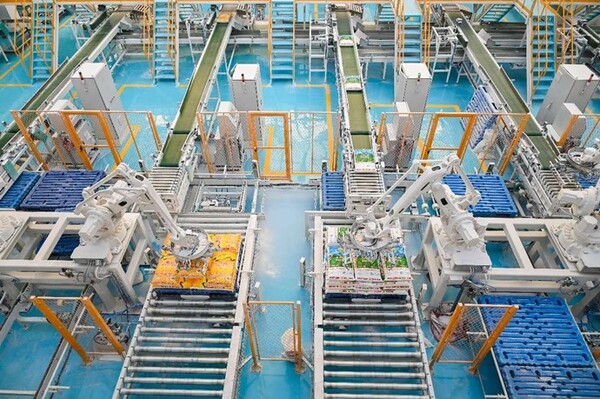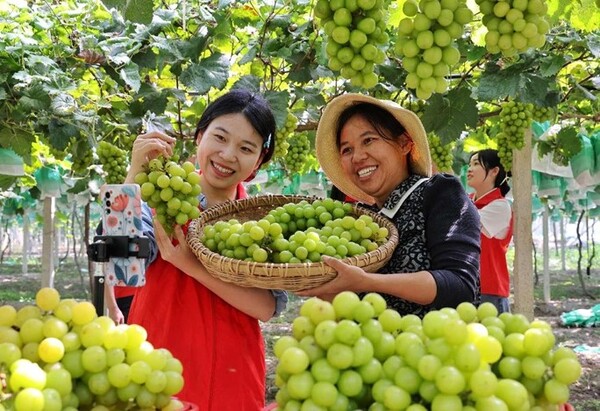By Liu Zhiqiang, People's Daily
China's GDP grew 5.2 percent year on year in the first three quarters of 2023, reaching 91.3 trillion yuan (about $ 12.7 trillion), according to statistics recently released by the country's National Bureau of Statistics (NBS).
The growths in the first, second and third quarters were 4.5 percent, 6.3 percent and 4.9 percent, respectively.
In the first three quarters, China's economy withstood downward pressure and continued to recover, said Sheng Laiyun, deputy head of the NBS, during a press conference on Oct. 18.

Particularly in the third quarter, multiple sectors and indicators showed positive changes, and the trend of overall economic recovery has become even more prominent, he added.
Deducting the base effect, the average two-year growth in the January-September period this year stood at 4.4 percent, 1.1 percentage points higher than the Q2 figure. China's GDP increased by 1.3 percent quarter-on-quarter in Q3, 0.8 percentage points higher than that of the second quarter.

Whether looking at year-on-year growth in the third quarter or cumulative growth in the first three quarters, China was among the top-performing major economies, Sheng said.
Employment performance was better. In the first three quarters, the surveyed urban unemployment rate nationwide was 5.3 percent, a decrease of 0.3 percentage points compared to the same period last year, and it improved month by month. In September, this figure stood at 5 percent, 0.2 percentage points down from August.
Overall price levels remained stable. In the January-September period, China's consumer price index (CPI) went up moderately by 0.4 percent, and the producer price index (PPI) for industrial products fell by 3.1 percent year on year, with a narrowing decline for three consecutive months.

In particular, in September, the PPI decreased by 2.5 percent year-on-year, nearly 3 percentage points less than the lowest point in June, indicating a stable and improving domestic demand.
High-quality development was steadily advanced. For example, innovation momentum remained abundant. In the first three quarters, investment in high-tech industries grew 11.4 percent year-on-year, with the production of electric vehicles, lithium-ion batteries, and solar cells maintaining rapid growth. Also, resident income increased steadily. In the first three quarters, the per capita disposable income of residents nationwide was 29,398 yuan, up 5.9 percent in real terms after deducting price factors, higher than GDP growth.
"These positive changes fully demonstrated that China's economy has continued to recover and improve in the first three quarters, and also highlighted the tremendous resilience, potential, and vitality of the Chinese economy," Sheng said.
Looking ahead, Sheng said growth will likely pick up in the fourth quarter given the continued recovery trend and stimulus policy measures taking effect gradually. "We are very confident in achieving the annual target," he said.
Consumption will continue to recover and improve. Sheng Laiyun explained that in the first three quarters, commodity consumption, service consumption, and household consumption expenditure have steadily rebounded, and local governments are accelerating the implementation of policies to promote consumption. Additionally, improvement in employment and growth in residents' income have laid a foundation for the recovery and growth of consumption, he added.
The industrial economy also bounced back steadily. In the first three quarters, the value-added industrial output of enterprises above designated size grew 4 percent year on year. In Sheng's view, a series of operational indicators have also released positive signals: purchasing managers' index returned to expansion territory; PPI declines narrowed for 3 consecutive months; industrial profits turned positive in August; in the first three quarters, the capacity utilization of industrial enterprises was 74.8 percent, and the sales-output ratio of industrial enterprises above designated size was 96.8 percent, up 0.4 and 0.6 percentage points respectively from the first half.
"Some of the positive changes in the economic sphere are preliminary, and the sustainability of these changes needs further observation. The foundation for stable economic recovery still needs to be consolidated," said Sheng. He added that in the next stage, it is crucial to ensure policy implementation and further cement the foundation for economic rebound.

